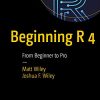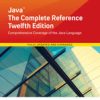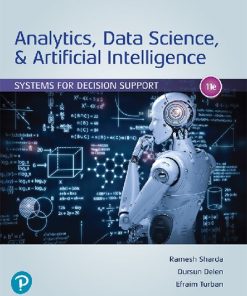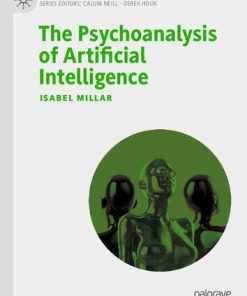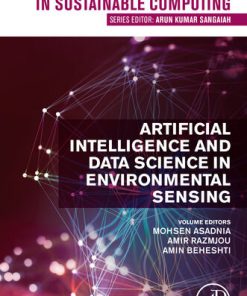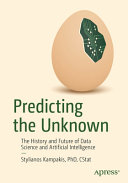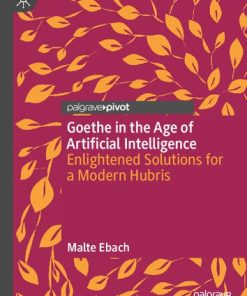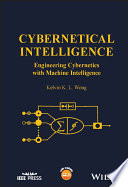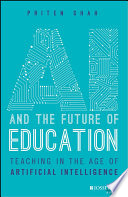(EBOOK PDF)Intelligence Science Leading the Age of Intelligence 1st edition by Zhongzhi Shi 9780323884983 0323884989 full chapters
$50.00 Original price was: $50.00.$25.00Current price is: $25.00.
Intelligence Science Leading the Age of Intelligence 1st edition by Zhongzhi Shi – Ebook PDF Instant Download/Delivery: 9780323884983, 0323884989
Full download Intelligence Science Leading the Age of Intelligence 1st edition after payment
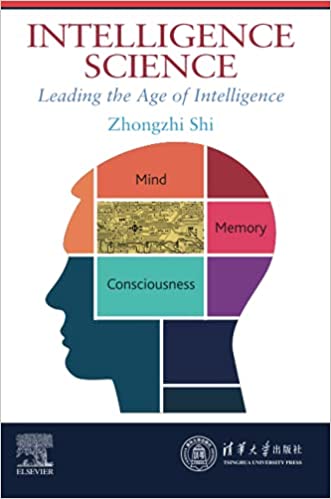
Product details:
• ISBN 10:0323884989
• ISBN 13:9780323884983
• Author:Zhongzhi Shi
Intelligence Science
Leading the Age of Intelligence
Intelligence Science: Leading the Age of Intelligence covers the emerging scientific research on the theory and technology of intelligence, bringing together disciplines such as neuroscience, cognitive science, and artificial intelligence to study the nature of intelligence, the functional simulation of intelligent behavior, and the development of new intelligent technologies. The book presents this complex, interdisciplinary area of study in an accessible volume, introducing foundational concepts and methods, and presenting the latest trends and developments. Chapters cover the Foundations of neurophysiology, Neural computing, Mind models, Perceptual intelligence, Language cognition, Learning, Memory, Thought, Intellectual development and cognitive structure, Emotion and affect, and more.
This volume synthesizes a very rich and complex area of research, with an aim of stimulating new lines of enquiry.
Intelligence Science Leading the Age of Intelligence 1st Table of contents:
Chapter 1. Introduction
Abstract
1.1 The Intelligence Revolution
1.2 The rise of intelligence science
1.3 Ten big issues of intelligence science
1.4 Research contents
1.5 Research methods
1.6 Prospects
References
Chapter 2. Foundation of neurophysiology
Abstract
2.1 The human brain
2.2 Nervous tissues
2.3 Synaptic transmission
2.4 Neurotransmitter
2.5 Transmembrane signal transduction
2.6 Resting membrane potential
2.7 Action potential
2.8 Ion channels
2.9 The nervous system
2.10 Cerebral cortex
References
Chapter 3. Neural computing
Abstract
3.1 Introduction
3.2 Back-propagation learning algorithm
3.3 Adaptive resonance theory model
3.4 Bayesian linking field model
3.5 Recurrent neural networks
3.6 Long short-term memory
3.7 Neural field model
3.8 Neural column model
References
Chapter 4. Mind model
Abstract
4.1 Mind
4.2 Turing machine
4.3 Physical symbol system
4.4 SOAR
4.5 ACT-R model
4.6 CAM model
4.7 Cognitive cycle
4.8 Perception, memory, and judgment model
References
Chapter 5. Perceptual intelligence
Abstract
5.1 Introduction
5.2 Perception
5.3 Representation
5.4 Perceptual theory
5.5 Vision
5.6 Audition
5.7 Speech recognition and synthesis
5.8 Attention
References
Chapter 6. Language cognition
Abstract
6.1 Introduction
6.2 Oral language
6.3 Written language
6.4 Chomsky’s formal grammar
6.5 Augmented transition networks
6.6 Concept dependency theory
6.7 Language understanding
6.8 Neural model of language understanding
References
Chapter 7. Learning
Abstract
7.1 Basic principle of learning
7.2 The learning theory of the behavioral school
7.3 Cognitive learning theory
7.4 Humanistic learning theory
7.5 Observational learning
7.6 Introspective learning
7.7 Reinforcement learning
7.8 Deep learning
7.9 Cognitive machine learning
References
Chapter 8. Memory
Abstract
8.1 Overview
8.2 Memory system
8.3 Long-term memory
8.4 Working memory
8.5 Implicit memory
8.6 Forgetting curve
8.7 Complementary learning and memory
8.8 Hierarchical temporal memory
References
Chapter 9. Thought
Abstract
9.1 Introduction
9.2 Hierarchical model of thought
9.3 Deductive inference
9.4 Inductive inference
9.5 Abductive inference
9.6 Analogical inference
9.7 Causal inference
9.8 Commonsense reasoning
9.9 Mathematics mechanization
References
Chapter 10. Intelligence development
Abstract
10.1 Intelligence
10.2 Intelligence test
10.3 Cognitive structure
10.4 Intelligence development based on operation
10.5 Intelligence development based on morphism category theory
10.6 Psychological logic
10.7 Artificial system of intelligence development
References
Chapter 11. Emotion intelligence
Abstract
11.1 Introduction
11.2 Emotion theory
11.3 Emotional model
11.4 Emotional quotient
11.5 Affective computing
11.6 Neural basis of emotion
References
Chapter 12. Consciousness
Abstract
12.1 Overview
12.2 Global workspace theory
12.3 Reductionism
12.4 Theory of neuronal group selection
12.5 Quantum theories
12.6 Information integration theory
12.7 Consciousness system in CAM
12.8 Conscious Turing machine
References
Chapter 13. Brain–computer integration
Abstract
13.1 Overview
13.2 Modules of the brain–computer interface
13.3 Electroencephalography signal analysis
13.4 Brain–computer interface technology
13.5 P300 brain–computer interface system
13.6 ABGP agent
13.7 Key technologies of brain–computer integration
References
Chapter 14. Brain-like intelligence
Abstract
14.1 Introduction
14.2 Blue Brain Project
14.3 Human Brain Project
14.4 Brain research in the United States
14.5 China Brain Project
14.6 Neuromorphic chip
14.7 Memristor
14.8 Development roadmap of intelligence science
References
Index
People also search for Intelligence Science Leading the Age of Intelligence 1st:
intelligence science: leading
intelligence science leading the age of intelligence
which country has the most intelligent scientists
intelligence rankings
which scientist has highest iq
Tags:
Intelligence Science,Leading the Age,Zhongzhi Shi
You may also like…
Business & Economics - Management & Leadership
Politics & Philosophy - Philosophical Positions & Movements
The Psychoanalysis of Artificial Intelligence 1st Edition Isabel Millar
Computers - Artificial Intelligence (AI)
Politics & Philosophy - Philosophical Positions & Movements
Computers - Artificial Intelligence (AI)
Goethe in the Age of Artificial Intelligence Enlightened Solutions for a Modern Hubris Malte Ebach
Computers - Artificial Intelligence (AI)
Computers - Artificial Intelligence (AI)
Business & Economics


